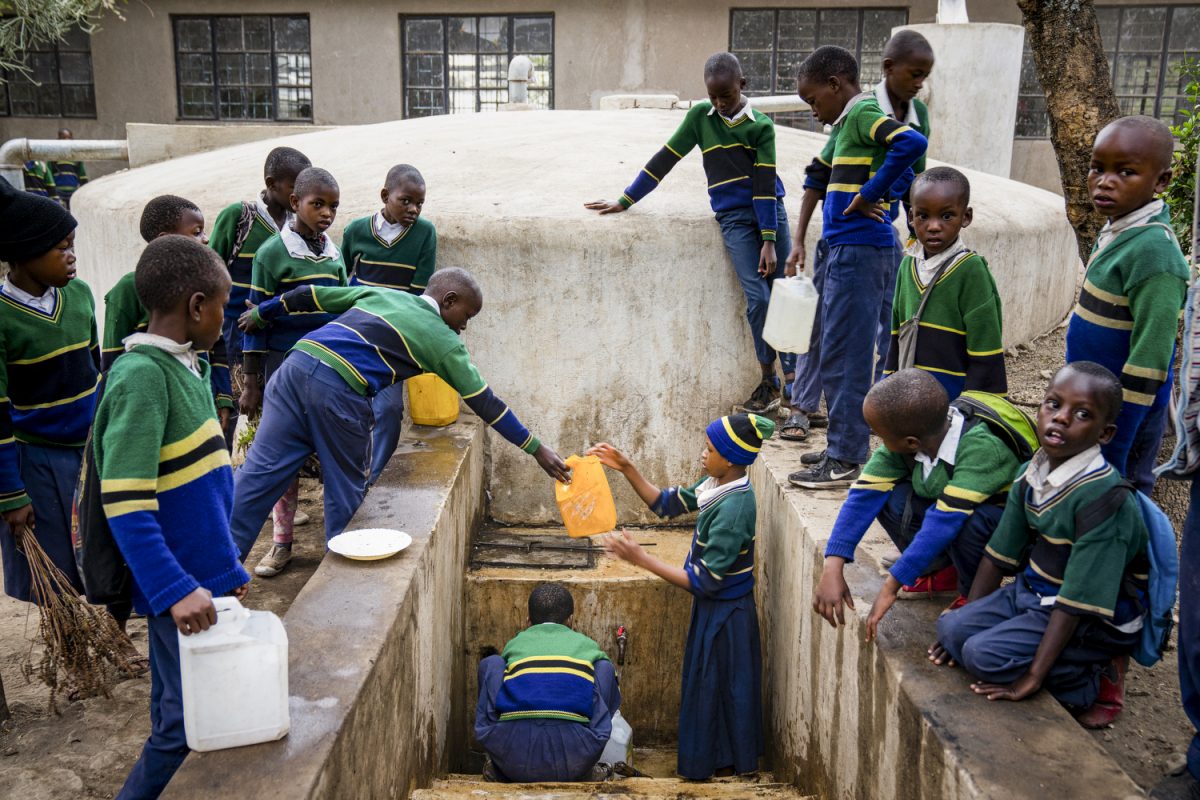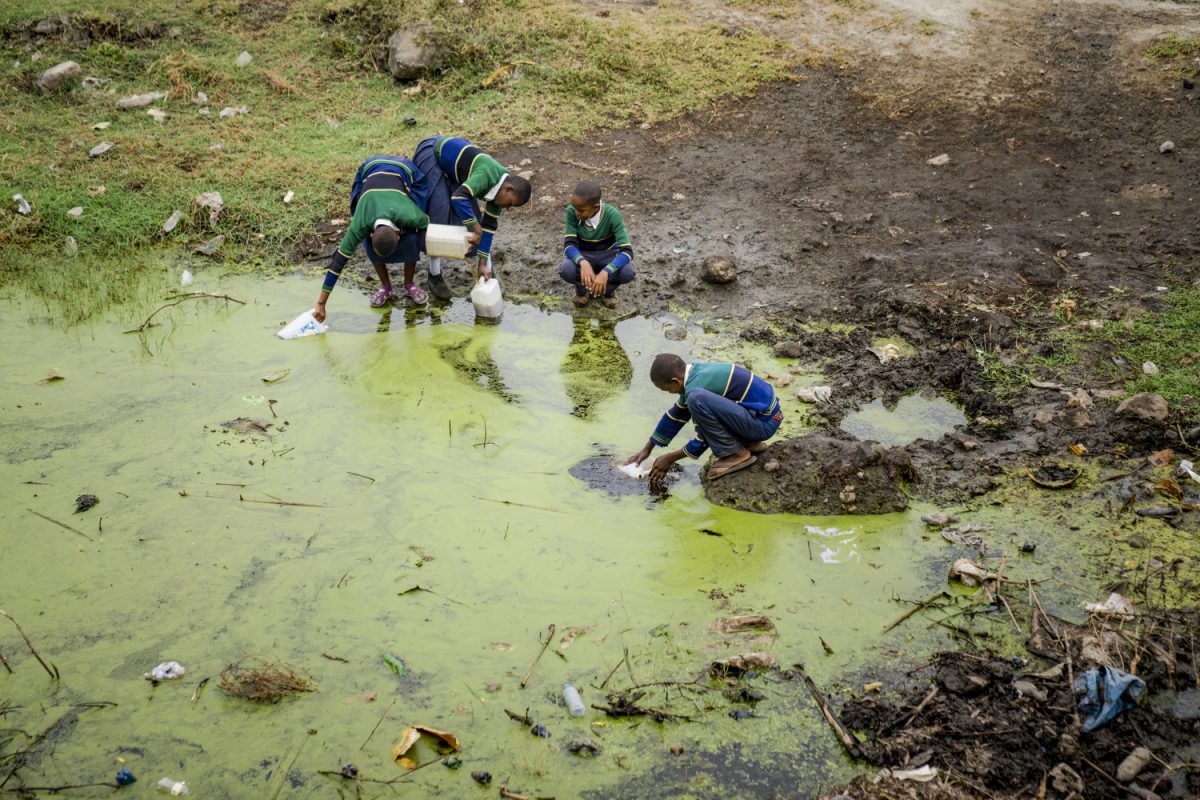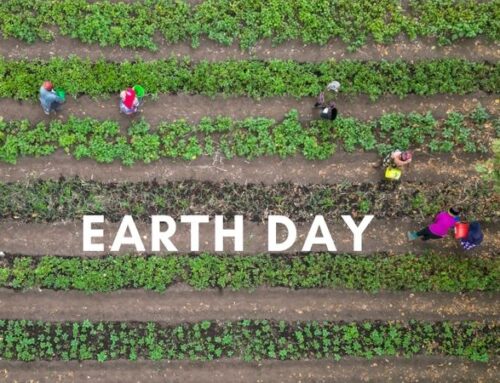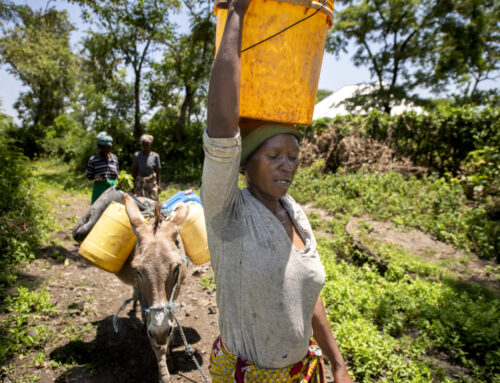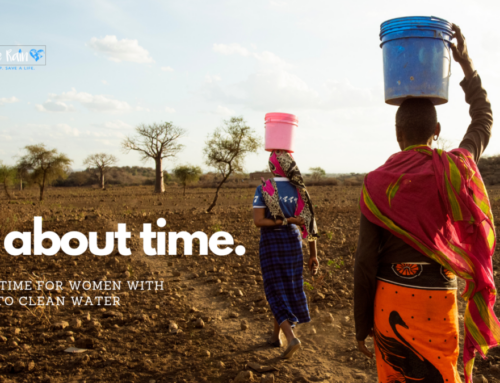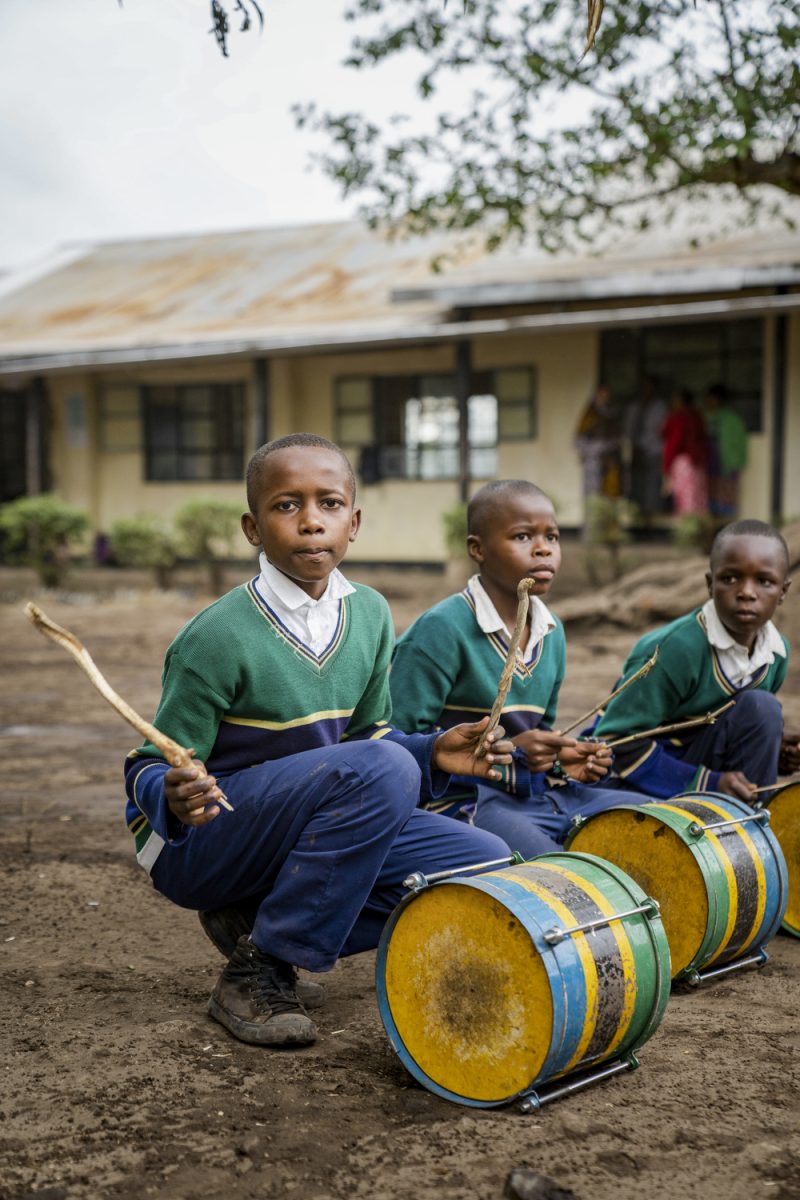
It’s early morning at Kimandafu Primary School, and students emerge through the dust like apparitions. Some are sweeping the yard. Some are picking up trash. Others are taking turns at the tap of an enormous water tank, careful not to spill en route to the vegetable garden. By contrast with the dusty haze, the vegetable patch is vivid: dark, lush green, and deep rich brown where the soil is wet.
Suddenly, drumming begins. The busy schoolyard scene transforms into neat lines, military-style. The national anthem fills the air in high voices, and then everyone marches into class. Empty of students, the dust settles, and there isn’t a leaf out of place. Stella is free to talk to us with her charges dispatched to their lessons.
‘The environment is everything’
Her role is environmental education – because the environment is everything, she states simply. We walk past the school cook taking her turn at the tank, filling buckets to make the midday meal. It used to just be a thin cornmeal porridge. Now, it’s a nourishing variety of foods and garden-fresh vegetables grown by the students.
Some stray students mill around the kitchen. Stella remarks, “they’re hungry, poor things – they haven’t had breakfast.” For some, an incentive for school attendance is a square meal they wouldn’t otherwise get.
The school overlooks a depression that holds a stagnant, filthy pond. We watch as people load donkey carts with buckets of dank, murky liquid. Before Save the Rain, the school begged neighbors for water. This putrid water is high in fluoride and dangerous.
That’s all changed.
The primary school‘s big rainwater harvesting tanks are 30,000, 40,000 and 80,000 liters. Several 3,500-liter tanks flank the bathrooms. For a school of 429 students and 15 teachers, it’s more than enough.
Abundance begets generosity. They know some of the kids are in a hard place, and they give them water to take home to their families. The handwashing stations have made a huge difference, notes Stella. Thanks to better hygiene and nutrition, attendance is up, and far fewer students lose out on education to poor health.
“Did we see the fruit trees?”
Stella walks us around proudly, showing us her vision. An area that’s barren and bare will, in a year, be green, shaded, and abundant with nutritious fruits. There are 76 trees – originally 80, but four were stolen out the ground. She laments the lack of a fence. Goats come in and graze, and people steal water, vegetables, trees… you name it. After all, the school is an island of plenty surrounded by people whose lives are ruled by scarcity.
But there is no fence between the school and its neighbors and no hard stop where the benefits end.
Just as it takes trees a few years to bear fruit, so with the ripple effects of clean water, but without doubt, abundance awaits.
You can support primary schools, like Kimandafu, and help more students reach their full potential.
100% of public donations directly fund our projects

